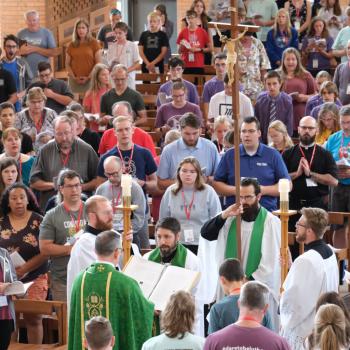
Becoming Harriet Tubman
Araminta “Minty” Ross
In honor of March being Woman’s History Month, I’d like to highlight Harriet Tubman Day. More specifically, I desire to examine how faith, vision, and activism ignited her pursuit of freedom.
But before we dive into the factors leading to her liberation and worthy celebration, let’s discuss Tubman’s background.
Anyone seeking to learn about Tubman’s background should start with her name. While the world knows this brave soul as Harriet Tubman, she entered the world with a different identity.
Araminta “Minty” Ross (Harriet Tubman) was born in March 1822. Minty was one of nine children born to Benjamin and Harriet Green Ross.
While Mr. Ross was a free man, his wife was considered a slave due to chattel slavery laws. Mrs. Ross’s enslavement meant her children would live their lives experiencing the same harsh realities.
Consequently, the Ross children were split up by slave owners who sent them to work on separate farms.
Minty’s labor began at the age of six, providing child care for various slave owners who would rent her. She was responsible for watching babies twenty-four hours a day.
The demands of this job meant Minty would endure sleep deprivation. Minty was also punished with harsh beatings if she was unable to keep babies from crying.
Tending to babies was not Minty’s only job. Some master’s made her work in the fields and clean out rodent traps. Performing these tasks caused her to endure harsh weather conditions leading to various illnesses.
A Divine Disability?
While slave labor affected Minty’s well-being, her most significant health concern was a life-changing disability. Minty acquired the disability after a slave master accidentally hit her in the head with a pot trying to stop a runaway.
The accident left Minty suffering from a fractured skull and narcolepsy (causing her to have severe headaches and uncontrollable seizures). Interestingly, after sustaining her injuries, Minty claimed to begin receiving visions directly from God.
Some scholars suggest Minty’s visions were merely further side effects of her injuries. No one can prove or disprove their argument.
With that being said, John 9:2-3 suggests God allows people to suffer from disabilities so his divine power can be revealed through them. Jesus makes this point when using the blind man’s healing to expose the Pharisees’ spiritual blindness.
For Minty, God’s power gives her sight to see divine visions of freedom. Through these visions, Minty’s desire to draw closer to God increases through constant prayerful conversations.
The Apostle Paul encourages believers to pray without ceasing, depend on, and be filled with the Holy Spirit. Realizing this, he would have rejoiced in her affliction since she came to know Christ in the power of his resurrection and fellowship of his suffering.
A Divine Transformation & Calling
Along with knowing and depending on their faith in Christ, Paul and Minty share another commonality. Both individuals experience divine transformations that ignite their specific calling.
For Paul, the transformation occurs through an encounter with God on Damascus Road. The encounter leads to him changing his name from Saul to Paul and becoming a follower of Christ.
Similarly, Minty’s transformation means changing her name to Harriet Tubman after marrying John Tubman.
However, her transformation differs from Paul’s because of their opposing views on slavery.
Paul instructs slaves to obey and faithfully serve their masters. For Harriet however, divine visions became the call to fight for freedom.
Interestingly, Harriet answers the call to obtain liberation uniquely. She acquires knowledge of various areas by observing them while completing different work assignments.
Tubman also became a great networker, building a good rapport with black sailors who informed her about others desiring freedom. These factors helped her create a route to escape to Philadelphia to connect with allies who could bring her vision to fruition.
Sadly, bringing Harriet’s calling to fruition meant forsaking two brothers who years earlier prevented her from trying to escape. While Harriet loved her brothers, she refused to let them hinder her purpose again.
Pursing & Obtaining Freedom
“Moses” & The Underground Railroad
Though traveling alone, Tubman arrived safely in Philadelphia a free woman by following the stars and receiving abolitionist assistance.
One abolitionist who served as Tubman’s mentor was William Still. Still taught her about places of refuge housing runaway slaves called the Underground Railroad.
Under his tutelage, Tubman acquired the confidence to return to Maryland and free her family.
After two successful trips, Tubman was reminded that freedom comes with a cost.
In her case, liberation meant experiencing the heartache of losing a husband who chose to remarry thinking she was dead. Liberating fellow slaves also meant being seen as a threat to the law.
Consequently, compensation of up to $40,000 would be awarded to her potential captor. Additionally, the Fugitive Slave Act encouraged citizens to return runaway slaves, even in “free” states.
Thankfully, Tubman and other abolitionists did not let unjust acts stop their fight for freedom. Instead, they liberated slaves by traveling to Canada.
Tubman’s labor involved taking 19 trips which led to the liberation of 70 slaves. Her efforts helped her become known by the nickname Moses (after the prophet who led the Israelites out of Egypt by faith).
Harriet Tubman Serving the Greater Good
Similar to Moses, Tubman’s pursuit of freedom came from faith in the Lord. Interestingly, she heeds Paul’s words in Galatians 5:13 using her freedom to serve others humbly in love.
Tubman proves this through the selfless decision to free other slaves through the Underground Railroad.
Another example is Tubman’s willingness to literally fight for the liberation of all slaves in America by
- Planning an unsuccessful raid of Harpers Ferry (leading to her friend John Brown’s murder).
- Becoming a spy, nurse, and cook for the Union Army.
- Being the first woman in U.S history to plan and lead a military raid freeing 750 people.
- Supporting the Woman’s Suffrage Movement.
- Helping Zion A.M.E Church raise money for a new building.
- Establishing a home for the aging.
This home is the same place where Tubman would make her triumphant transition to eternity on March 10, 1913.
Harriet Tubman Day
Ways to Celebrate March 10th
While Tubman died on March 10th, this date is not a time of mourning. March 10th became an annual day to commemorate Tubman’s legacy when President George H. Bush signed an official proclamation into effect on March 9, 1990.
This resolution honors Tubman for her labor as an abolitionist and the various duties she fulfilled as a member of the Union Army. This celebration also acknowledges her commitment to faith, justice, and human dignity.
Individuals who wish to celebrate Harriet Tubman on her special day can do so by
- Visiting historical landmarks.
- Learning about Harriet Tubman and other abolitionist.
- Participating in social justice work.
Along with efforts, I encourage readers to follow in Tubman’s footsteps by devoting themselves to prayer. Doing so will allow them to mature in their walk with God as they learn to be led by the Holy Spirit.
Being led by the Holy Spirit will ignite a passion for God’s specific calling for each person to fulfill.
Lastly, I encourage everyone to use Harriet Tubman’s story as inspiration to review Moses’s story.
In chapter five of her book, Spring Washam mentions how studying Tubman’s connection to Moses brings back fond memories of attending a black church as a teenager.
Those memories compel Washam to read Moses’s story afresh and could be a step toward restoring her relationship with Jesus Christ.
Likewise, reading Moses’ story can increase your faith in God or help you learn spiritual lessons for everyday life.
How will you celebrate Harriet Tubman Day? I’d love to hear your thoughts. Your comments and feedback are greatly appreciated!

















